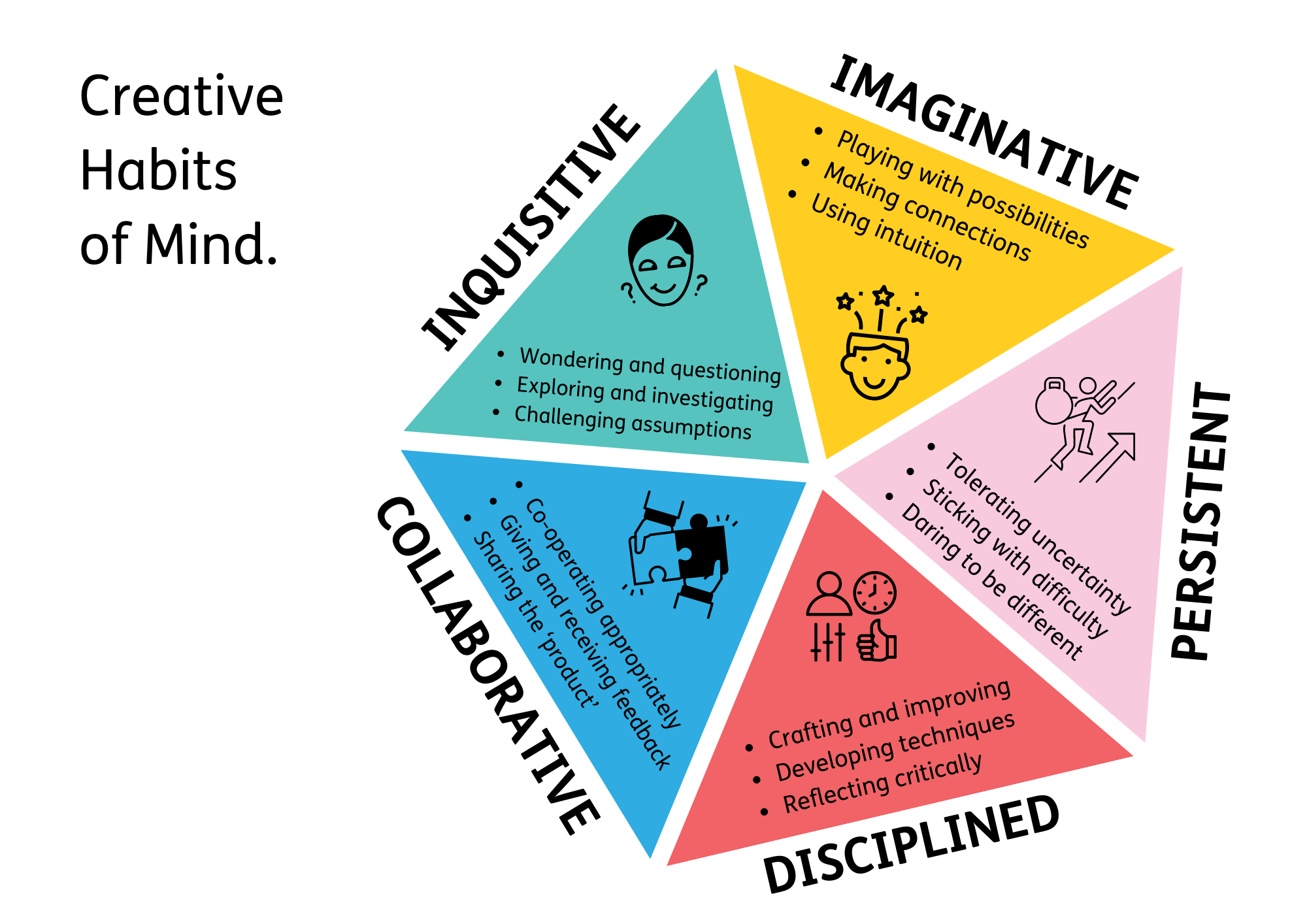
Creativity and Learning
In the ever-evolving landscape of education, one word stands out: creativity. It’s not just an artistic endeavor; it plays a pivotal role in how we learn and grow. The connection between creativity and learning can transform classrooms into vibrant hubs of innovation where students thrive. Imagine a space where ideas flow freely, critical thinking flourishes, and enthusiasm ignites every lesson. This is not merely a dream but a tangible reality when educators embrace the powerful bond that exists between these two concepts.
As we delve deeper into this fascinating interplay, we’ll explore why nurturing creativity in educational settings is essential for developing well-rounded individuals. Get ready to discover how fostering creative thinking enriches the learning experience for everyone involved!

The Importance of Creativity in Education
Creativity in education is crucial for developing critical skills. It encourages students to think outside the box and approach problems with fresh perspectives.
When students engage in creative activities, they learn to express themselves confidently. This self-expression nurtures emotional intelligence alongside academic growth.
Additionally, creativity fosters collaboration among peers. Group projects that require innovative thinking help build communication skills essential for future success.
Moreover, integrating creativity into learning experiences makes lessons more memorable. When students connect emotionally with their work, retention improves significantly.
In a world that continuously evolves, fostering creativity equips learners with adaptability. They become better prepared to face challenges and navigate complex situations in their lives and careers.
Prioritizing creativity in education cultivates not just knowledgeable individuals but also passionate thinkers who can contribute meaningfully to society.
How Creativity Enhances Learning
Creativity opens doors to deeper understanding. When students engage in creative tasks, they explore concepts from different angles. This exploration fosters critical thinking and helps retain information more effectively.
Creative activities activate various parts of the brain. They encourage connections that traditional learning methods might overlook. For instance, drawing or acting can make complex subjects like science or history feel relatable and memorable.
Collaboration is another key benefit of creativity in learning. Group projects stimulate discussion and idea sharing. Students learn to value diverse perspectives while developing teamwork skills essential for future success.
Moreover, creativity boosts motivation and engagement. When learners express themselves through art, music, or writing, they become invested in their education. This passion leads to a richer educational experience that transcends rote memorization.
By embracing creativity, educators can transform classrooms into vibrant spaces where learning flourishes naturally.
Creative Teaching Strategies for Different Learning Styles
Every student learns differently. This diversity calls for creative teaching strategies that cater to various learning styles.
Visual learners thrive on images and diagrams. Using colorful charts or videos can bring concepts to life for them.
Auditory learners benefit from discussions and lectures. Incorporating storytelling or group debates can enhance their comprehension.
Kinesthetic learners, who grasp information through movement, need hands-on activities. Incorporate experiments or role-playing exercises to engage these active minds.
For those who are reading/writing inclined, provide written assignments that encourage critical thinking. Journals or essays allow them to express ideas clearly.
By blending these approaches, educators create a dynamic classroom environment where every student feels included and empowered in the learning process. Creativity transforms traditional lessons into interactive experiences that resonate with all types of learners.
Incorporating Creativity in Traditional Curriculum
Integrating creativity into traditional curriculum can transform the educational experience. This approach encourages students to think outside the box while mastering core subjects.
One effective method is project-based learning. Students engage in hands-on projects that require them to apply knowledge creatively. For instance, a science lesson could involve creating an eco-friendly model of a habitat.
Another strategy is incorporating art and storytelling into lessons. History classes might benefit from having students reenact historical events or create visual timelines using various media.
Additionally, allowing for open-ended questions fosters critical thinking. When students explore topics with flexibility, their curiosity deepens, leading to innovative ideas.
Incorporating technology also sparks creativity. Tools like digital storytelling platforms or collaborative online workspaces enable interactive learning experiences that resonate with today’s learners.
By blending creative elements within established curricula, educators can cultivate a vibrant environment where both knowledge and imagination thrive.

Benefits of a Creative Learning Environment
A creative learning environment sparks innovation and enthusiasm. It encourages students to express their thoughts freely, leading to deeper understanding.
When creativity flourishes, collaboration thrives. Students learn from each other while sharing diverse ideas. This synergy helps build social skills that are crucial in today’s world.
In such settings, mistakes become valuable lessons rather than failures. Students feel safe to experiment without fear of judgment. This mindset fosters resilience and adaptability—traits essential for lifelong learning.
Additionally, a vibrant atmosphere can ignite passion for subjects often deemed dull or challenging. Engaging projects make abstract concepts tangible and relatable.
Teachers play a vital role too; they can inspire curiosity through dynamic activities tailored to various interests. A supportive space enhances motivation by allowing learners to explore at their own pace while honing critical thinking skills.
Creativity blossoms when students are encouraged to think outside the box, transforming traditional education into an exciting journey of discovery.
Nurturing Creativity in Students
Nurturing creativity in students begins with creating an open environment. This space should encourage exploration without fear of judgment. When students feel safe to express themselves, their imaginations can flourish.
Encouragement plays a key role as well. Teachers and parents should recognize and celebrate creative efforts, no matter how small. A simple acknowledgment can inspire further innovation.
Incorporating diverse activities helps too. Art projects, music sessions, or drama games engage different talents and interests. These experiences allow students to discover new ways of thinking.
Collaboration among peers enhances creativity as well. Group projects foster teamwork while exposing individuals to varied perspectives. Sharing ideas often ignites fresh concepts that might not emerge in isolation.
Moreover, providing resources is essential—tools like art supplies or technological gadgets stimulate curiosity. The more options available, the greater the potential for imaginative breakthroughs in learning processes.
Conclusion: Why Creativity Should be Prioritized in Education
Creativity plays a crucial role in education. It fosters an environment where students feel empowered to explore, innovate, and engage deeply with the material. When creativity is prioritized, it encourages learners to think critically and approach problems from multiple angles.
By integrating creative methods into various subjects, educators can cater to diverse learning styles. This adaptability not only enhances knowledge retention but also makes learning more enjoyable for students.
Furthermore, a creative learning environment promotes collaboration among peers. When students share ideas and work together on projects, they develop essential social skills that will benefit them well beyond the classroom.
Nurturing creativity should be seen as integral to educational frameworks. As we move forward in an ever-changing world, fostering innovation and imaginative thinking is vital for preparing future generations for success.
Prioritizing creativity in education unlocks potential within every student. It transforms classrooms into arenas of discovery where imagination thrives alongside academic achievement. Embracing this connection between creativity and learning paves the way for brighter futures filled with endless possibilities.




Leave a Reply